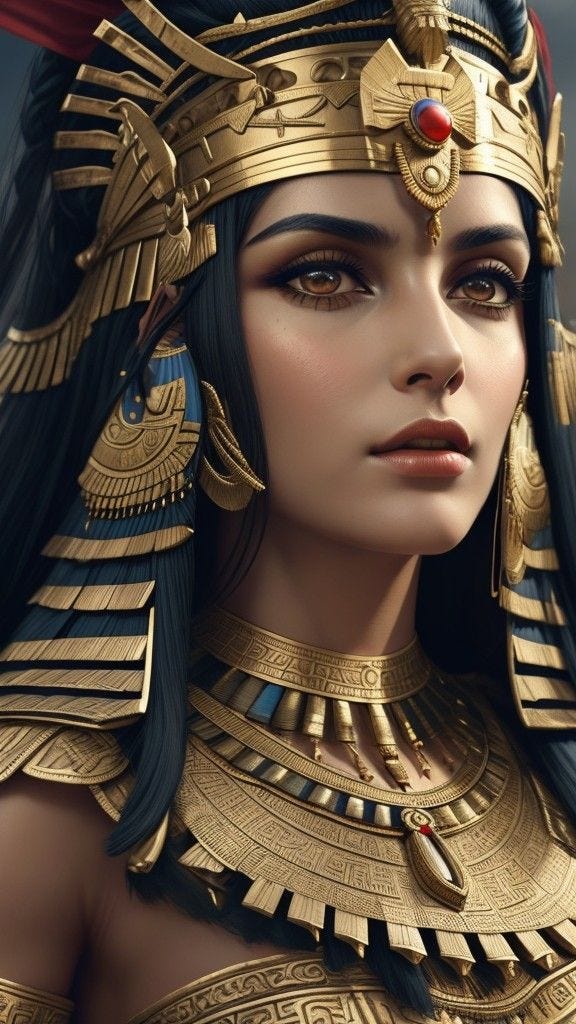Cleopatra’s Cultural Legacy: A Timeless Impact on Art, Literature, and Pop Culture
Cleopatra, the last active ruler of the Ptolemaic Kingdom of Egypt, transcends the boundaries of time through her enduring influence on art, literature, and popular culture. Her remarkable reign, characterized by political acumen and a legendary love affair with Mark Antony, has captivated the imaginations of artists, writers, and creators across centuries. This article delves into Cleopatra’s profound cultural impact, exploring how her legacy continues to shape our perceptions of power, beauty, and passion.

Artistic Representations
Through the Ages: One of the most striking aspects of Cleopatra’s cultural impact is the myriad ways artists have depicted her throughout history. From ancient sculptures and coins to Renaissance paintings and Hollywood films, Cleopatra’s image has been reimagined in diverse artistic mediums. The article will trace the evolution of Cleopatra’s portrayal in art, emphasizing the cultural and societal influences that shaped each representation. Special attention will be given to iconic artworks, such as the Cleopatra bust in the British Museum and the famous paintings by artists like Titian and Jean-Léon Gérôme.
Cleopatra in Literature:
Cleopatra’s allure extends beyond the canvas to the written word, where her character has been a source of fascination for poets, playwrights, and novelists. This section explores how Cleopatra’s story has been interpreted and reinterpreted in literature, from the works of Shakespeare to modern novels like Stacy Schiff’s “Cleopatra: A Life.” Examining the themes and characterizations in various literary works, the article will highlight the enduring elements of Cleopatra’s narrative that continue to captivate readers.
Cinematic and Theatrical Adaptations:
The silver screen and the stage have both served as platforms for Cleopatra’s larger-than-life presence. This section explores the cinematic and theatrical adaptations of Cleopatra’s story, with a focus on the iconic 1963 film starring Elizabeth Taylor. The article will discuss the impact of such adaptations on popular culture, examining how they contribute to the shaping of Cleopatra’s image and influence public perceptions.
Cleopatra’s Influence on Fashion and Beauty:
Cleopatra’s legendary beauty and style have left an indelible mark on the world of fashion. This section delves into the influence of Cleopatra’s aesthetic on contemporary fashion and beauty trends. From makeup styles inspired by ancient Egyptian cosmetics to runway collections drawing inspiration from her regal attire, Cleopatra continues to be a muse for designers and beauty enthusiasts alike.
Contemporary Pop Culture References:
Cleopatra’s cultural impact is not confined to the realms of history, art, and literature; it permeates contemporary pop culture as well. This section explores how references to Cleopatra appear in music, television, and advertising. Whether through song lyrics, TV show plots, or marketing campaigns, Cleopatra’s name and image persist as symbols of allure, power, and sophistication.
Cleopatra’s Symbolic Significance:
Beyond the specific mediums through which Cleopatra is represented, this section delves into the symbolic significance attached to her persona. Her story embodies themes of love, ambition, and tragedy, making her a timeless symbol that resonates with audiences across cultures. The article will discuss the archetypal elements of Cleopatra’s character and how they contribute to her enduring cultural significance.
Conclusion:
In conclusion, Cleopatra’s cultural impact is a testament to the enduring power of her story and persona. From ancient artworks to modern films, Cleopatra’s influence remains alive and well, shaping our perceptions of beauty, power, and love. As we continue to draw inspiration from this enigmatic queen, it becomes evident that Cleopatra’s legacy is not bound by the constraints of time but continues to evolve, leaving an indelible mark on the cultural landscape.
